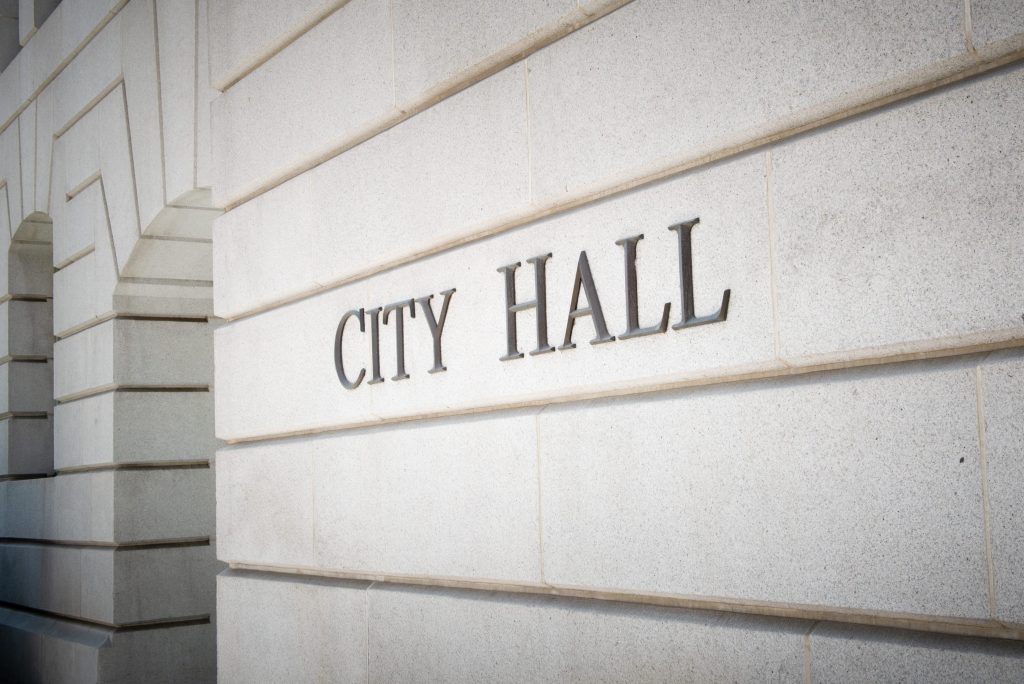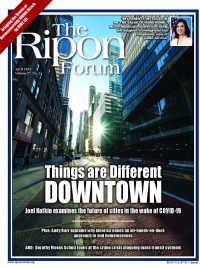
We are entering a new urban epoch, with the potential to disrupt city life in ways not unlike that created in the shift from an industrial to what Jean Gottman described in 1983 as the “transactional city.” Based on finance, high-end business services and information technology, transactional cities were defined not by production and trade in physical goods, but by intangible products concocted in soaring office towers.
For years, academic researchers, both on the Left and Right, envisioned a high-tech economic future dominated by dense urban areas. Yet when viewed through the lens of migration and employment, London, New York, San Francisco, Chicago, and Los Angeles have all been suffering relative declines for at least the last decade. The ultra-tall towers that once symbolized urban greatness are now as anachronistic as the Cathedrals of the Middle Ages. Office occupancy has been declining since the turn of the century, while construction of new space has also fallen. In 2019, before the pandemic, construction was one-third the rate of 1985 and half that of 2000.
More serious still has been the movement of people. Migration to dense cities, already a small share of all moves, started to decline as early as 2015. But it accelerated during the pandemic. Dense centers — what historian William McNeil described as the “confluence of the civilized disease pools” — have historically suffered the worst during pandemics. Ancient Rome did, as did the great cities of the Renaissance, the Islamic Caliphate, and China. During the COVID-19 pandemic, the dense urban centers of today met the same fate, suffering generally the worst fatality rates.
Migration to dense cities, already a small share of all moves, started to decline as early as 2015. But it accelerated during the pandemic.
The pandemic clearly accelerated a devastating rise in crime and lawlessness, perhaps most notably in London, Paris, Washington, New York, Los Angeles, San Francisco, Philadelphia and Chicago. In some parts of Chicago and Philadelphia, young men now have a greater chance of being killed by firearms than the American soldiers who served during the wars in Afghanistan and Iraq.
Yet it is misleading to blame this on the pandemic alone. Indeed, despite the pre-COVID talk of people moving “back-to-the-city,” suburbs have accounted for about 90% of all metropolitan growth in the United States since 2010, gaining 2 million net domestic migrants, while the urban core counties lost 2.7 million. This process is likely to be impacted over the long term as more workers choose to work at home, at least two to three days a week. Stanford economist Nicholas Bloom has suggested that even after the pandemic, remote workers will constitute at least 20 percent of the workforce, more than three times the pre-pandemic rate.
All this accentuates a mounting crisis for urban governance. Even before the pandemic the transactional city had undermined the middle and working class as costs rose, schools deteriorated, and regulation flourished. Cities like New York, London, and Paris may continue to attract the ultra-rich who buy properties there, even if they live there only intermittently. But they are steadily losing the middle class.
Not surprisingly, these cities tend to have among the worst inequality of any geographic area, an urban model very different than the Jane Jacobs’ conception of a city that does not “lure the middle class” but “creates one”. Indeed, as the transactional city reached its apogee, the opportunity horizon for working- and middle-class families dimmed. In 1970, half of the city of Chicago was middle class; today, according to a 2019 University of Illinois study, that number is down to 16 percent. Meanwhile the percentage of poor people has risen from 42 to 62 percent
The question now is how do cities survive? In New York, city leaders realize that the era shaped by the office tower is coming to an end and plan to convert many of these buildings into housing. But this may be of only limited utility. According to one recent estimate, barely 20 million of the city’s 420 million square feet of office space is suitable for conversion, despite this being much desired by the building’s desperate owners. In another less promising sign, both New York and Chicago plan to build large casinos — the kind of Hail Mary pass that has rarely delivered solid economic results.

Clearly, current urban leadership needs to change. The key challenge lies with restoring or at least maintaining the stable middle or working class constituencies that elected the last crop of effective reformers.
Just as critical will be addressing the fundamental issues relating to governance. This will require a greater emphasis on dispersed neighborhoods, some still doing well as work disperses. It will also require shifting away from the progressive agenda that has made so many cities unlivable, from bans on energy sources such as natural gas, to a refusal to crack down on crime, to the usually miserable state of urban public education. Communities might be housed in neighborhoods, but the people in them need to have a reason to want to keep living there, particularly if they have children.
Clearly, current urban leadership needs to change. The key challenge lies with restoring or at least maintaining the stable middle or working class constituencies that elected the last crop of effective reformers — Rudy Giuliani in New York, Ed Rendell in Philadelphia, Bob Lanier in Houston or Richard Riordan in Los Angeles. Powerful public employee political machines, daft billionaires, and highly radicalized lobbies all stand in the way of a real turnaround.
To survive and thrive in the “city of bits” era, urban areas will have to compete for residents and businesses, not for economic necessity but as a choice. Critically, cities must be places
chosen by the rash of grassroots startups and keep some middle class families from leaving. In recent years, large cities have become increasingly childless. The number of babies born in Manhattan this decade dropped nearly 15 percent. Already home to a majority of single households, the nation’s premier urban center could see its infant population cut in half in 30 years.
To be successful in the future, cities can only compete by providing a more dynamic, vital alternative to the periphery or small towns. In the “city of bits” era, success depends on tapping the skills and entrepreneurial penchant of its denizens. Cities need to grow not by becoming greater or more grandiose, but by offering a better, safer, and exciting urban experience, a more people-friendly metropolis.
Joel Kotkin is the presidential fellow in Urban Futures at Chapman University and executive director of the Urban Reform Institute. His most recent book is ‘The Coming of Neo-Feudalism.’




